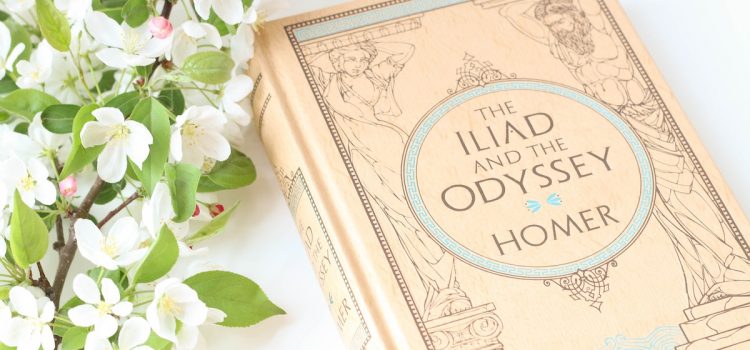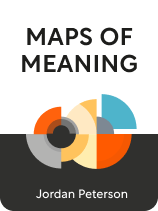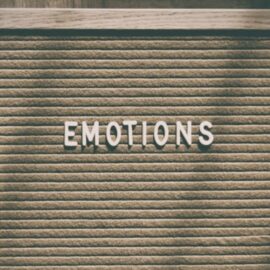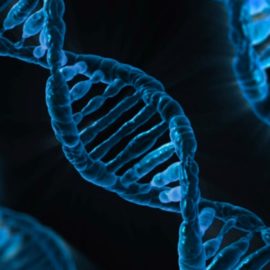

This article is an excerpt from the Shortform book guide to "Maps of Meaning" by Jordan Peterson. Shortform has the world's best summaries and analyses of books you should be reading.
Like this article? Sign up for a free trial here.
What is the Hero’s Journey? What stages does the Hero go through? What does the Journey mean in a psychological sense?
Along with the Creation Myth, the Hero’s Journey crops up all over the world. Jordan Peterson examines the story’s common outline and how the story serves as a tool for interpreting the world and our actions.
Continue reading to understand this fundamental story that permeates all of mythology.
The Hero’s Journey
What is the Hero’s Journey? It’s similar to the Creation Myth, but, instead of providing a foundation for society, the Hero’s Journey is a model for individual behavior. Peterson claims that it reflects the unconscious process through which the human brain processes new information.
Peterson explains the stages of the quest, from the Hero’s origin as a youth in a troubled kingdom, to their descent into the underworld where they confront the dangers threatening society, before bringing peace back to the world. Peterson elaborates on how the steps in the Hero’s Journey equate to how the human brain processes new information.
Once upon a time, there was a golden age, but that’s not where the Hero’s Journey starts. The golden age represents more than a past utopia—it’s also a future to which we aspire. However, the Hero’s Journey begins with a kingdom in decline under the rule of a Tyrant. Because the Tyrant wants nothing to grow beyond his power, the inevitable changes in the world beyond his borders grow ever more threatening to his status quo. In myth, that threat becomes a literal danger in the form of the Mother Destroyer or the Dragon itself. The Hero is willing to face the danger, while the Tyrant seeks merely to wall the kingdom off and crush any dissent.
| A Different Call to Action In The Hero With a Thousand Faces, Joseph Campbell presents an alternate interpretation of the start of the Hero’s Journey. In Campbell’s analysis, the Hero’s Journey begins with a literal call to action by a figure called the Herald—such as when the burning bush speaks to Moses in the Old Testament. Campbell points out that the Hero initially resists the call before setting out on an adventure. His human reluctance is the first obstacle he must overcome. Whereas Peterson interprets the Hero’s Journey as a quest to conquer the unknown outer world, Campbell interprets the quest as an introspective endeavor. The Herald who gives the initial call to action is a manifestation of the Hero’s subconscious spurring him toward the need for spiritual growth, which in turn benefits society as a whole. |
The Hero leaves home and becomes an apprentice in order to find his place in the world. Once there, Peterson says they see the threat to the kingdom and willingly venture into the unknown, often represented as a literal journey through the underworld. The hero discovers a solution to what’s threatening the kingdom through creative thinking and a process of discovery. Once the threat has been resolved, and the world beyond has been explored and understood, the Hero returns home with his newfound knowledge and replaces the Tyrant as the kingdom’s new, benevolent Father—until the cycle repeats itself again.
(Shortform note: Mythological stories rarely end with a “happily ever after.” Instead, many myths emphasize the cyclical patterns of time through stories of death and rebirth, downfall and redemption. The ancient Greeks believed the world fluctuated between periods of order and chaos. The Egyptians viewed time itself as cyclical, as was reflected in their mythic chronology. The Maya used their mythology of death and rebirth as the basis for their calendar, as does the Hindu faith, which measures cycles of time in millions of years.)
A prime example of the Heroic Quest is the legend of Perseus, the human son of Zeus. When Queen Cassiopeia foolishly compares her daughter Andromeda’s beauty to the gods, the angered gods respond with destruction in the form of the sea monster Cetus (the Dragon). An oracle tells King Cepheus that to save his kingdom he must sacrifice his daughter (just as the Tyrant Father slays his children). However, Perseus finds the means to kill Cetus by taking the head of Medusa (the terrifying Mother). After rescuing Andromeda, Perseus weds her and becomes the new Good King.
(Shortform note: Not everyone accepts that the Hero’s Journey is as universal as Peterson and others claim. Some critics accuse Peterson of interpreting myths of Heroes defeating Chaos through the lens of his own political views while ignoring the social and historical context within which different cultures’ mythologies developed. Others argue that the Hero’s Journey model distorts the stories of non-Western cultures to make them fit a Eurocentric mold.)
The Meaning of the Journey
The Hero’s Journey is prevalent in stories throughout the ages because it’s a myth that tells us how to face the unknown and turn it into personal growth. More than that, it rings true because it reflects the path to learning that takes place in our brains.
Peterson draws a one-to-one connection between the steps on the Hero’s Journey and the process the mind goes through when responding to a surprise or a threat. The kingdom’s golden age is the left-brain process where everything is as blissful as we expect—until the moment that it’s not. The limbic system’s trigger of fear and curiosity is the kingdom’s immediate reaction to threat and the Hero’s call to adventure. The right-brain process of creation and discovery is the Hero’s Journey through the underworld, and the left brain’s acceptance of new information is the Hero’s triumphant return.
Of course, our ancient forbears weren’t neurologists, but, according to Peterson, the Heroic Quest pervades myths worldwide precisely because it matches the process that takes place in our heads. Coping with unexpected shocks to our lives is a fundamental and unavoidable part of human experience, and so (as verbal creatures) we abstract that experience into stories. Over thousands of years, those stories have gravitated toward a certain formula—one that expresses the fundamental truth about how people learn and grow.
| The Heroic Formula in Modern Cinema Peterson’s argument that folklore and myth developed over time to fit a certain formula has a corollary—namely, that the Heroic Quest should continue to evolve into the modern age. In The Writer’s Journey, author Christopher Vogler updates the quest structure for present-day screenwriters, explaining how the same formula can be applied to many different human situations, including introspective journeys of personal growth. Even modern versions of the classic myths may restructure their stories to better fit the Hero’s Journey. For instance, the legend of Perseus described earlier in this guide was adapted into the 1981 film Clash of the Titans, which made notable deviations from the original Greek source. The film rearranges the sequence of events so that Perseus only begins his quest after the threat to the kingdom and includes a literal journey to the underworld, aided by the ferryman Charon. The film even adds a Rival archetype in the character Calibos, who is a demigod like Perseus, who follows the same quest—yet does so to prevent the kingdom’s salvation. All these modern changes strengthen the parallels to the Hero’s Journey arc. |
Exercise: Are You the Hero of Your Story?
Peterson argues that the Heroic Journey represents the mental and emotional stages we go through when encountering unexpected difficulties in order to form a solution to a problem. When a difficult situation appears, at first we feel both fear and curiosity. Then, we have a choice—to seek comfort in the safety of routine and tradition or to explore the problem and reevaluate our thinking to come up with a creative solution.
- Describe a time when you experienced a major disruption to your life. How did it make you feel?
- Once you were past the initial shock, what steps did you take to resolve the problem? Did you retreat for a time into safe, familiar patterns? Did you have to push yourself to learn something new in order to move forward with your life? If so, what was it?
- In the end, how did you resolve the shake-up in your life? Did the event change your outlook in any way? How might the lessons you learned from the experience be used to help others in your life?

———End of Preview———
Like what you just read? Read the rest of the world's best book summary and analysis of Jordan Peterson's "Maps of Meaning" at Shortform.
Here's what you'll find in our full Maps of Meaning summary:
- Why myths are vital to how humans confront and make sense of a chaotic world
- How to apply the lessons of myth to live a more well-rounded life
- How the findings of neuroscience are echoed in the structure of our most ancient tales






